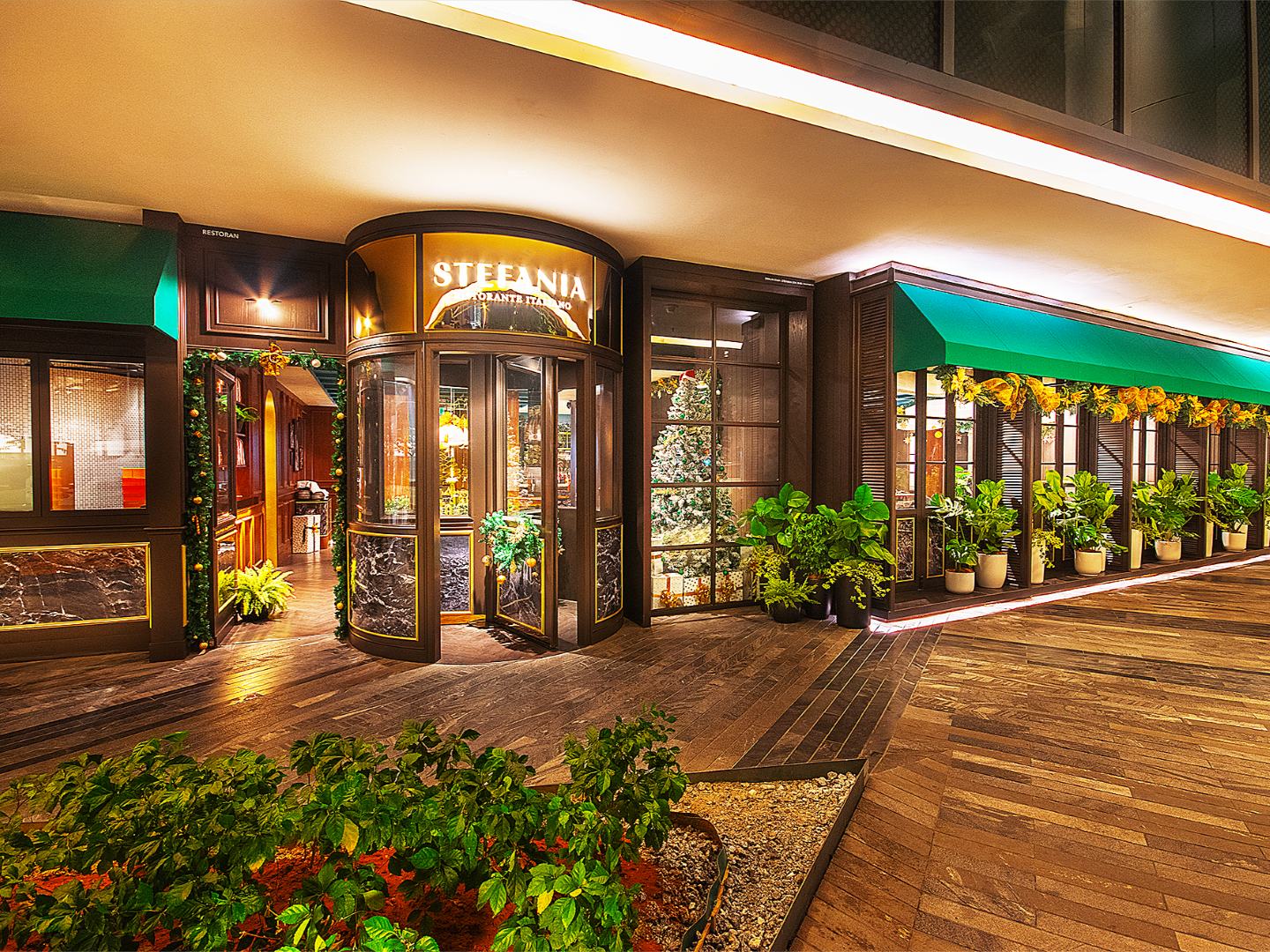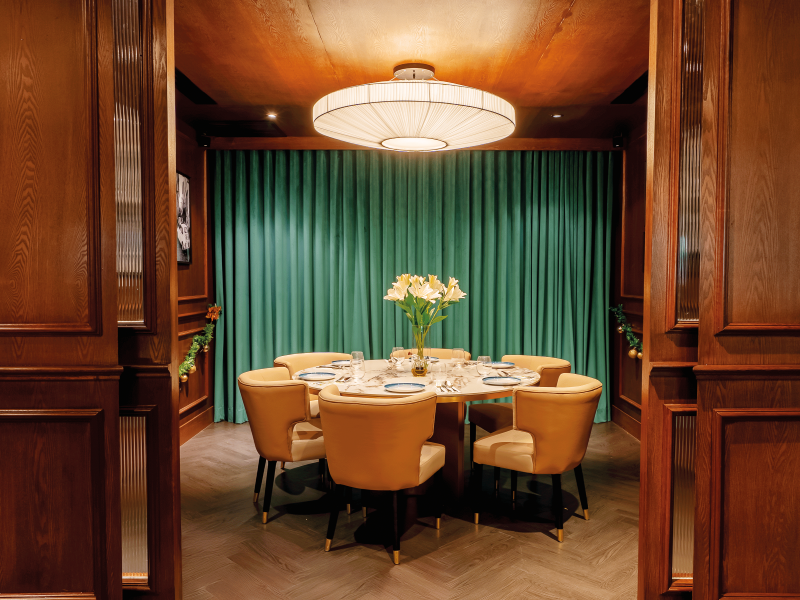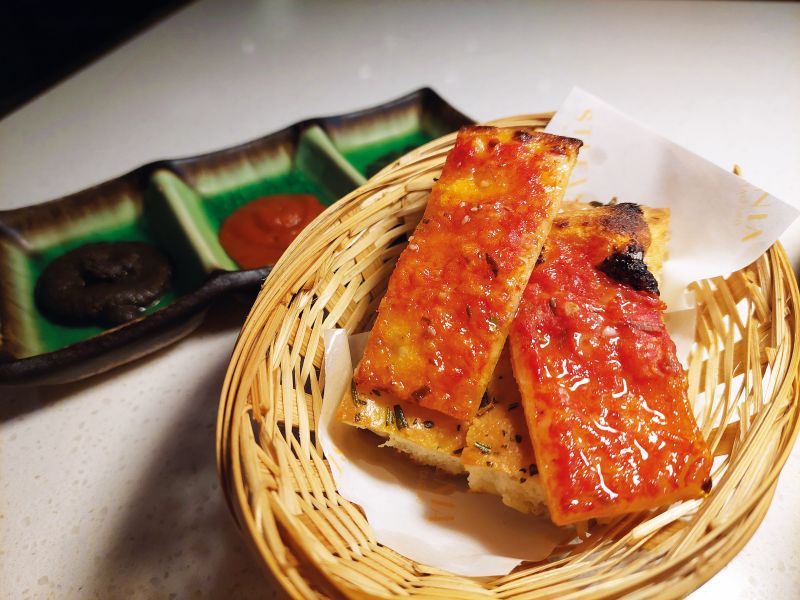
Stefania replaces the space once occupied by BLVD House (Photo: Stefania Ristorante Italiano)
The human body is 60% water. Which is why, 23 minutes after I was seated at Naza Tower’s new Stefania, I am still staring fixatedly at my empty glass, getting thirstier and thirstier by the second.
There are many things to like about Stefania, chef Diego Reali’s new “Roman-Italian” venture. The service, sadly, isn’t one of them.
At the risk of teaching granny how to suck eggs, when I worked in restaurants, I was always told “greet your guests, seat them, give them menus, take beverage orders and serve immediately so guests have something to drink while reading the menu”. And it’s a quiet weekday evening, so the waitstaff aren’t exactly overworked. Somehow, somewhere along the line, this time-honoured pearl of wisdom has been forgotten.
My wait for water gives me time to ponder this new yet familiar-feeling space, bathed in the last light of the sunset. Stefania emerged two months ago from the carcass of the old Park Grill, which in turn took over the husk of BLVD House, the former home of the ghastly flaming bean-can chicken.
stefania_2.png

Reali was the founding chef at Avenue K’s still-popular Natalina Italian Kitchen. And it suddenly dawns on me why the space feels so familiar. He has transplanted far more than his recipes: the dim lighting, the bronze table lamps, the marble-patterned tables, the twisty two-in-one olive oil and balsamic vinegar dispensers, all are virtually identical to those at his former home. And whereas Natalina was named after Frank Sinatra’s mum for some inexplicable reason, Stefania pays homage to Reali’s real-life mama.
Tonight’s crowd is eclectic. Around me, I spy an Italian family moodily brooding over the menu (with drinks in hand, lucky them) and a young couple on a first date, with the guy trying valiantly, and failing, to impress his companion by ordering in Italian.
The food is rather less try-hard. Thankfully for fans of Natalina’s, and I count myself among them, the kitchen here is executing Reali’s food very well. It isn’t alta cucina by any stretch, and Italian food is often at its best when it’s kept simple and essential.
20250223_182209.jpg

The bewildered staff are hard-pressed to explain the “rosa” pizza in the bread basket, but it’s warm and tasty and goes well with a glass of prosecco, even if the accompanying focaccia is a bit greasy. More Natalina déjà vu overwhelms me with the trio of tasty dips presented with the bread: tomato paste, black olive and salsa verde.
The house-made pappardelle is slinky and tender yet with real bite, a genuinely well-crafted noodle. Unfortunately, the local palate (and undoubtedly, Stefania’s investors) demands more meat and sauce to justify the premium for “Western”, so the pasta is drowned in an admittedly good beef ragu. I would love to be able to enjoy the taste and texture of the pasta itself, but I suspect I’m very much in the minority on this point.
The “Roman-style” pizzas (again, no one can explain to me why the pizzas here are “Roman-style”) are nice and crusty. They don’t have the smokiness of pies cooked in a wood-fired oven, but the servings are generous and the Diavola is suitably spicy.
20250223_185433.jpg

To finish, I need to sample the tiramisu. The dessert — which was created in Treviso in 1800 and which means “pick me up” in the local dialect, stemming from the words tireme su before being Italianised into present-day “tiramisu” — is the real deal: rich, creamy and jacked with so much coffee and booze that I had trouble sleeping after. It is quite a hefty serving (with a hefty price tag of RM52++), so maybe I was meant to share it to avoid the ill-effects, I don’t know, but it was worth every restless toss-and-turn in my bed that night.
As an aside, culinary urban legend states that the ubiquitous pudding has somewhat bawdy origins, said to have been invented by the madame of a 19th-century house of ill repute in the northeastern city of many canals. And just like Amsterdam, what is it about cities, canals and courtesans? But lest I digress any further, food historians claim said madame created tiramisu as both aphrodisiac and tonic, allowing clients to enjoy whatever they paid for and leave the premises suitably reinvigorated, so suspicions need not be, for want of a better word, aroused and the man of the house may perform conjugally, should duty call later.
tiramisu_-_copy.jpg

I walk out into the cool night, well fed and a little twitchy from the tiramisu. But the experience would have been so much more complete with better, more intuitive service. So much hospitality is intuitive, and not about formal, foreign and unfamiliar rituals we need to rehearse. Any self-respecting Malaysian would offer guests to their home a drink when they come in, so why wouldn’t you do the same at a restaurant?
KL diners have historically been blasé about service, but things will not improve until we start to demand better and restaurateurs will not invest in it until they see the demand for it. Stefania is not alone in letting the side down. Which is a pity as for me, it serves one of the better Italian meals in town.
Score: 12.75/20
Food: 7/10
Service: 2.5/5
Ambience: 2.25/3
Magic: 1/2
Stefania Ristorante Italiano, G floor, Naza Tower, Platinum Park, KL. Budget around RM200 nett per person for three courses, excluding drinks.
This article first appeared on Apr 14, 2025 in The Edge Malaysia.


